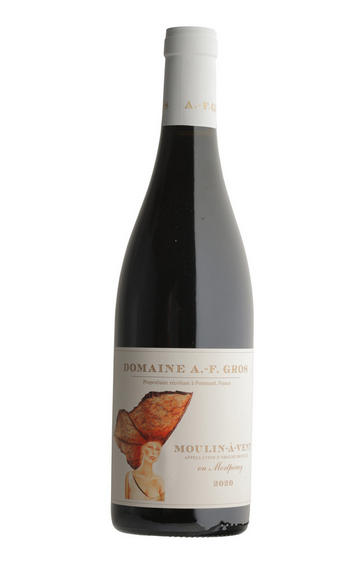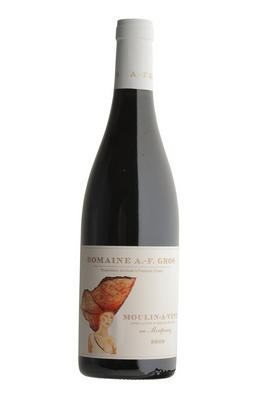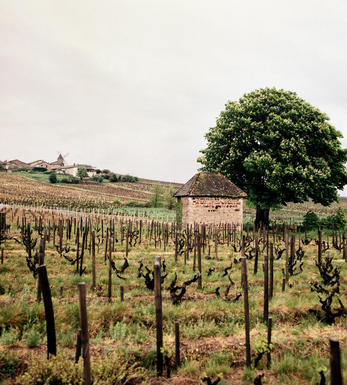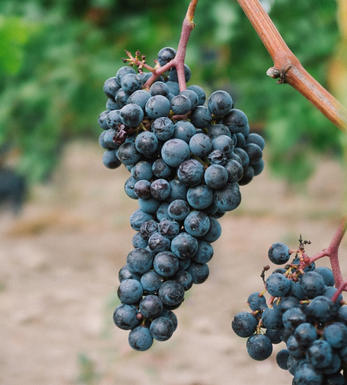
2020 Moulin-à-Vent, En Mortperay, Domaine A.-F. Gros, Beaujolais

About this WINE

Domaine A-F Gros
Anne-Françoise Gros, originally of Vosne-Romanée, is married to François Parent of Pommard, where they live, though their wines have been made in substantial premises in Beaune since 1998. Their joint living as wine-makers is ably assisted by their children Caroline (pictured) and Mathieu.
The domaine consists of Anne-Françoise’s share of Domaine Jean Gros, additional wines in and around Vosne-Romanée which she has bought or leased, and her husband’s share of Domaine Parent. He also offers wines under his own label, adorned with a black truffle. Her labels sport the outline of a female head, each one different according to the interpretation of the style of the appellation by Anne-Françoise and the artist.
There has been a sorting table since 2008, after which the grapes are destemmed but not crushed. The grapes are given a short cool maceration, then fermented with more pumping over than punching down, with the juice being concentrated by a similar machine to that used by Michel and Bernard Gros, if necessary.
Jasper Morris MW, Burgundy Wine Director and author of the award-winning Inside Burgundy comprehensive handbook.

Beaujolais
The Beaujolais region occupies 22,000ha between Mâcon and Lyon, and spans 34 miles from north to south. Around 70 million litres of Beaujolais are produced each year, or two-and-a-half times the entire red and white wine production of the rest of Burgundy put together. More than half of this is sold as Beaujolais Nouveau, and released on the third Thursday of November following each harvest.
Beaujolais is almost exclusively planted with the Gamay grape, and produces mostly red wines. A small amount of white Beaujolais is produced from Chardonnay (or Aligoté) while a handful of Beaujolais rosés can also be found.
It is one of life's injustices that this beautiful wine region is forever associated in most people's minds with Beaujolais Nouveau, a thin and dilute wine that has more to do with marketing than actual substance. However, there is an Aladdin's trove of gloriously satisfying wines to be found amongst the 10 named village crus that form the spiritual home of the fresh, fruity Gamay grape.
From north to south, St Amour, Juliénas, Moulin-à-Vent, Chénas, Fleurie, Chiroubles, Morgon, Régnié (a cru since 1988), Brouilly, and Côte de Brouilly are situated along the 15-mile strip of granite hills to the north of the region. They range from light, lively, and fragrant to rich and velvety. While most Beaujolais should be drunk as soon as possible, the crus are infinitely more concentrated and have much more personality. They can be kept for up to 10 years, at which age the best examples resemble mature Pinot Noir.
At its best, simple Beaujolais is fruity and eminently drinkable, especially when lightly-chilled in summer. Most Beaujolais displays a pear-drop edge to its soft red fruit, and often notes of banana and bubble gum too. These traits come largely from the vinification method (semi-carbonic maceration) rather than the Gamay grape itself, where a swift fermentation highlights the aromatics and fruit, while minimizing the tannins. Amongst the top crus, however, there has been a return to more traditional Burgundian vinification methods, and even oak ageing.
There are five classifications of Beaujolais: Beaujolais Nouveau, Beaujolais, Beaujolais Supérieur, Beaujolais Villages, and the 10 Beaujolais crus. As with the rest of Burgundy, the producer's name on the bottle is often the most important factor.
Recommended producers: Michel Chignard, Jean-Claude Desvignes, Olivier Merlin, Alain Michaud.

Gamay
A French variety planted predominately in Beaujolais where it is the grape behind everything from light and often acidic Beaujolais Nouveau through to the more serious and well-structured wines from the 10 cru villages. It takes its name from a hamlet just outside Chassagne-Montrachet and was at one stage widely planted on the Côte d`Or. However it was gradually phased out due to its poor yield and supposed poor quality of its wines.
The majority of Gamay wines in Beaujolais are labelled as Beaujolais or Beaujolais-Villages and are deliciously juicy, easy drinking, gulpable wines. Of more interest are the Cru wines from the 10 villages in the north of the region where the soil is predominantly granitic schist and where the vines are planted on gently undulating slopes. These can be well-structured, intensely perfumed wines, redolent of ripe black fruits and, while delicious young, will reward medium term cellaring.
Gamay is also grown in the Touraine region of the Loire where it produces soft, well-balanced, gluggable wines for drinking young.


Buying options
Add to wishlist
Description
While the A.-F. Gros domaine’s holdings are historically from Vosne and Pommard, the new generation has branched out into Beaujolais, purchasing almost 4 hectares in Moulin-à-Vent.
The vines are a mix of old and young and are planted on sandy granite soil. This, combined with whole bunch fermentation and winemaking without any new oak, gives a fruity, forward expression of Beaujolais while retaining the seriousness of this famous cru.
There is a hint of liquorice on the nose alongside cherry fruit and a dash of pepper, while the palate is creamy, bright and crunchy with a pleasing granite structure behind.
Drink now – 2030
Adam Bruntlett, Senior Buyer, Berry Bros. & Rudd (October 2021)
wine at a glance
Delivery and quality guarantee